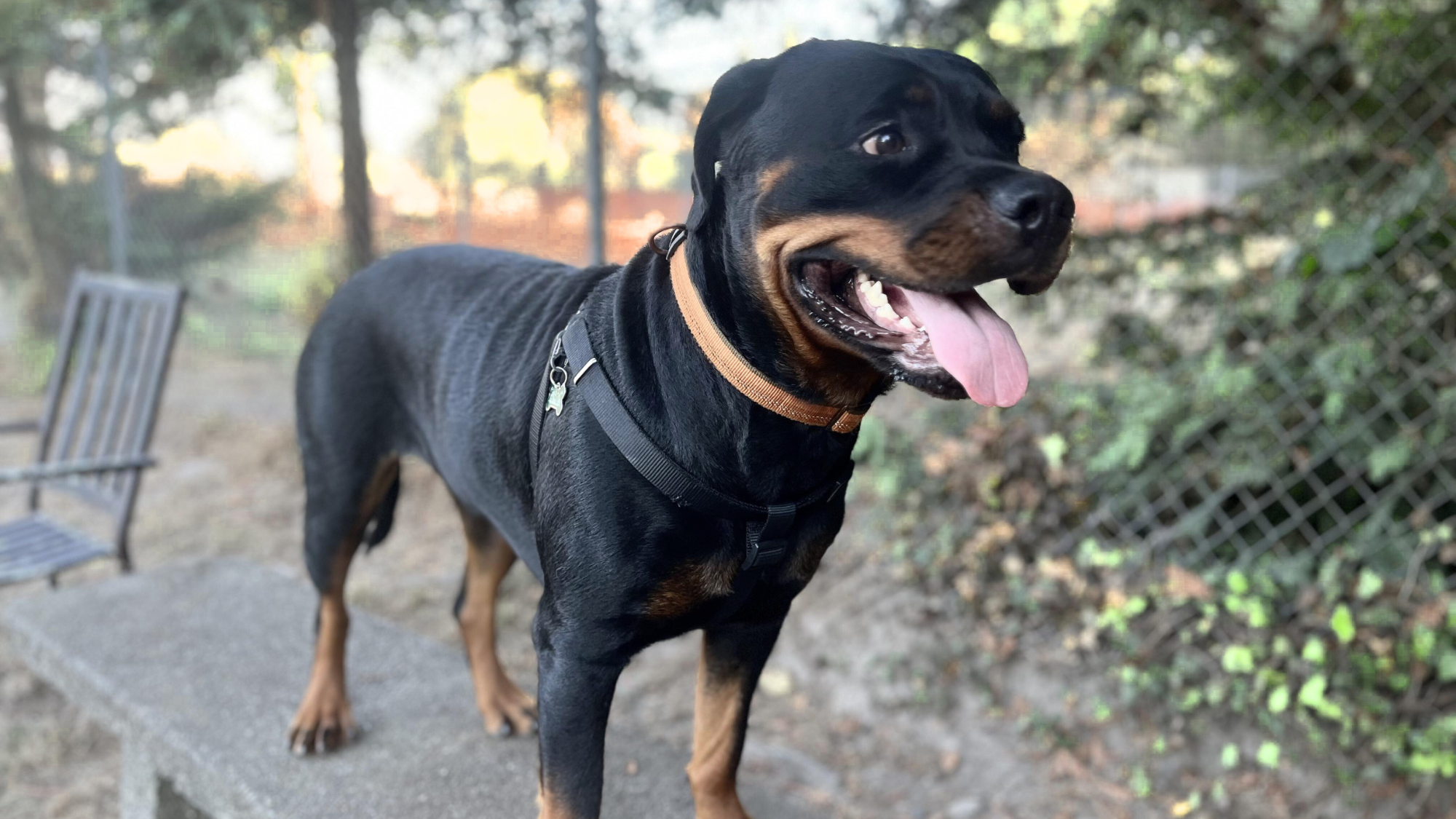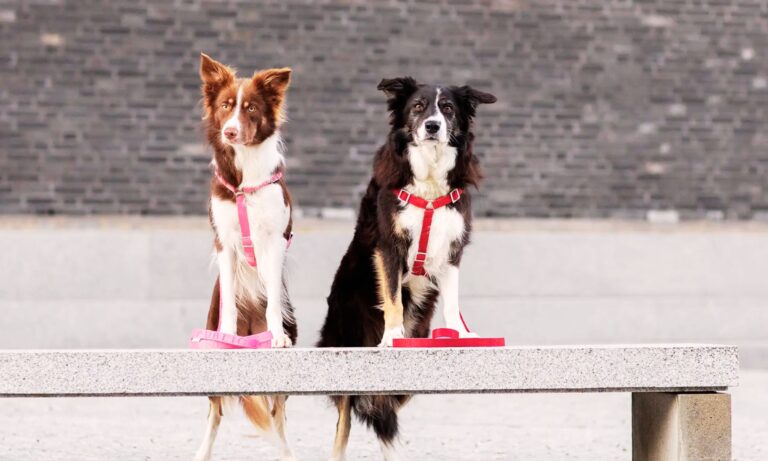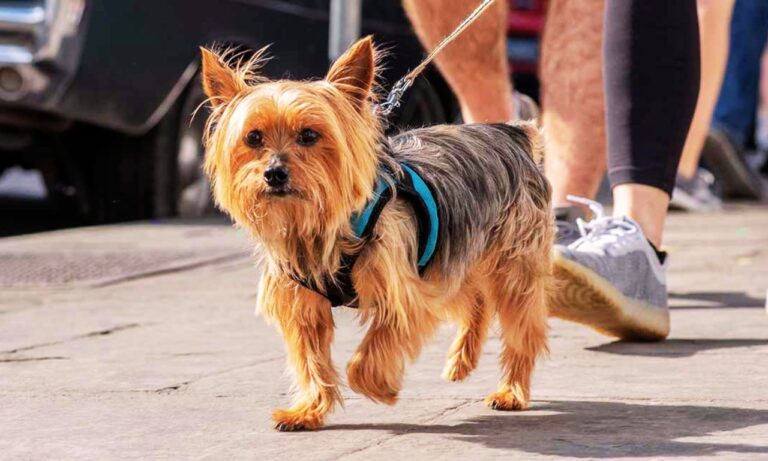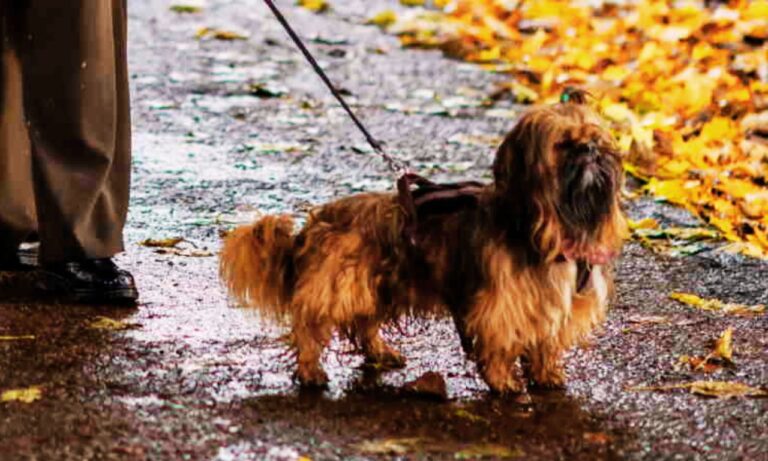| Summary: 6 month rottweiler weight: A six-month-old Rottweiler typically weighs 26-34 kg (57-75 lbs), depending on genetics, diet, and activity level. Males tend to be heavier than females. Proper nutrition and regular exercise are essential to maintaining healthy growth. Monitoring weight ensures steady development while preventing obesity or undernourishment, promoting a strong and balanced adult physique. |
At six months old, a Rottweiler experiences one of its most crucial growth phases. This stage determines the dog’s future size, strength, and health. Proper diet, exercise, and training play a vital role in ensuring the dog develops a strong skeletal structure and muscle mass. Many Rottweiler owners often wonder whether their pup is growing at a normal pace, whether they are feeding them the right diet, and how to handle their increasing energy levels.
At this stage, they experience rapid growth, requiring a high-protein diet to support muscle development. Pet tech products like smart feeding bowls assist in portion control.
I will explore the 6 month rottweiler weight expectations of a 6-month-old Rottweiler, provide a detailed growth chart, discuss dietary needs, and offer essential care tips. Since every dog is unique, it’s important to recognize the factors that can influence their weight and overall development. By the end of this guide, you will have a clear understanding of how to support your Rottweiler’s growth and well-being.
Blog Highlights
Toggle6 Month Rottweiler Weight: How Much Should a 6-Month-Old Rottweiler Weigh?
A 6-month-old male Rottweiler typically weighs between 30-40 kg, depending on genetics and nutrition. GPS dog collars help monitor their outdoor activities to ensure proper exercise.

A six-month-old Rottweiler’s weight varies depending on gender, genetics, diet, and activity levels. Typically, at this stage, male Rottweilers weigh between 30-40 kg (66-88 lbs), while females weigh around 26-36 kg (57-79 lbs).
| Age (Months) | Male Weight (kg/lbs) | Female Weight (kg/lbs) |
| 3 Months | 14-20 kg (30-44 lbs) | 12-18 kg (26-40 lbs) |
| 4 Months | 19-26 kg (42-57 lbs) | 16-23 kg (35-50 lbs) |
| 5 Months | 24-32 kg (53-71 lbs) | 20-28 kg (44-62 lbs) |
| 6 Months | 30-40 kg (66-88 lbs) | 26-36 kg (57-79 lbs) |
Rottweilers grow rapidly during the first 12 months, and their weight should increase steadily. However, a healthy Rottweiler should have a well-defined waist and visible muscle tone. If your puppy appears overweight or underweight, adjustments in diet and exercise may be needed.
Several factors influence 6 month rottweiler weight, including genetics, diet, exercise, and health conditions. Some Rottweilers may be slightly larger or smaller than average due to their lineage. If you are unsure whether your Rottweiler’s weight is appropriate, consulting a vet can provide further insights.
Learn about the size collar for an American Eskimo to ensure a perfect fit and comfort for your dog.
What Should You Feed a 6-Month-Old Rottweiler?

1. Nutritional Requirements for Proper Growth
A Rottweiler’s diet must be balanced to support muscle and bone growth. This breed requires high-quality protein, healthy fats, and essential minerals like calcium and phosphorus. At six months, Rottweilers should eat three meals a day before transitioning to two meals per day as they approach adulthood.
Growth rates may vary, and maintaining a healthy weight prevents joint issues later in life. Electronic dog collars can be used to reinforce early training habits.
A diet rich in animal protein (22-26%) and fats (12-16%) ensures strong muscle development. Omega-3 and Omega-6 fatty acids are crucial for maintaining a healthy coat and reducing inflammation in growing joints. Without proper nutrition, your Rottweiler may develop joint issues, weak bones, or stunted growth.
2. Recommended Foods for a 6-Month-Old Rottweiler

✔ High-quality kibble (large breed formula)
✔ Raw diet (balanced protein, fats, and vegetables)
✔ Cooked meats like chicken, beef, and turkey
✔ Fish oil supplements for joint and coat health
Avoid feeding your puppy table scraps, cooked bones, chocolate, onions, and grapes, as they can be toxic. Always ensure your Rottweiler has access to fresh, clean water, as dehydration can impact their growth.
3. Common Feeding Mistakes
Overfeeding can lead to obesity, putting excessive pressure on growing joints. Underfeeding, on the other hand, may result in stunted growth or nutrient deficiencies. Portion control is crucial, and using a slow-feed bowl can help prevent rapid eating, reducing the risk of bloat—a life-threatening condition common in deep-chested breeds.
How Much Exercise Does a 6-Month-Old Rottweiler Need?
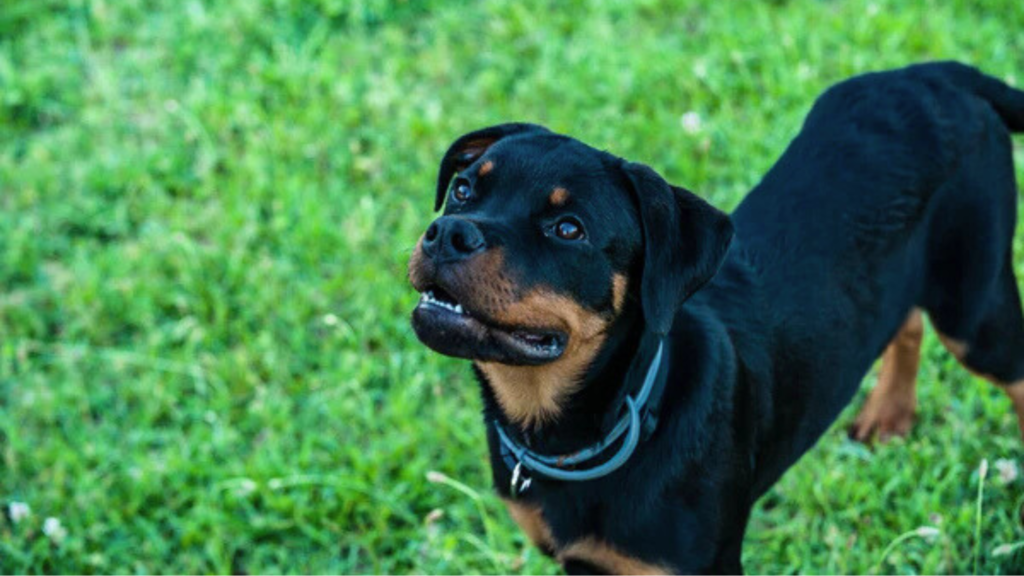
1. Daily Exercise Requirements
At six months, Rottweilers are energetic and require 60-75 minutes of exercise daily, broken into multiple short sessions to avoid joint strain. Long periods of intense running should be avoided until their bones fully develop.
Structured exercise includes 30-40 minutes of leash walks, playtime with interactive toys, and short training sessions. Ensuring a balance between mental and physical stimulation will prevent destructive behavior caused by boredom.
2. Safe Activities for a 6-Month-Old Rottweiler
Engaging in low-impact exercises such as controlled leash walks, swimming, and basic agility exercises can strengthen muscles without putting excessive stress on joints. Interactive play like tug-of-war and fetch also helps develop coordination and muscle control.
3. Avoiding Over-Exercising
Too much high-impact exercise can lead to joint damage, hip dysplasia, and exhaustion. Rottweilers have growth plates that close around 12-18 months, so activities like jumping, running on hard surfaces, and excessive stair climbing should be limited.
Regular vet checkups and exercise routines are essential to ensure steady growth and muscle conditioning. Dog training equipment helps keep them active and well-trained.
Training a 6-Month-Old Rottweiler: What to Expect
1. Essential Commands for Behavior Control
Training is crucial at six months, as this is when Rottweilers test boundaries. Teaching basic commands like “Sit,” “Stay,” “Come,” and “Heel” helps establish control. Positive reinforcement with treats and praise is the most effective method for training this breed.
Rottweilers are eager to please but can become stubborn. Consistency, patience, and firm leadership are key to ensuring obedience. If not properly trained, a Rottweiler may develop territorial aggression or dominance issues.
2. Addressing Behavioral Challenges
At six months, some common behavior problems include chewing, biting, and excessive barking. Providing chew toys, socializing with other dogs, and reinforcing good behavior with rewards can prevent destructive habits.
3. Importance of Socialization
Exposing your Rottweiler to different people, environments, and sounds will reduce fear and aggression later in life. Taking them to dog parks, meeting new people, and introducing them to various situations will help shape a well-behaved adult dog.
Discover why Afghan Hound collars are wide by exploring the unique characteristics of this breed and how wide collars enhance their comfort and style.
Health Concerns in a 6-Month-Old Rottweiler
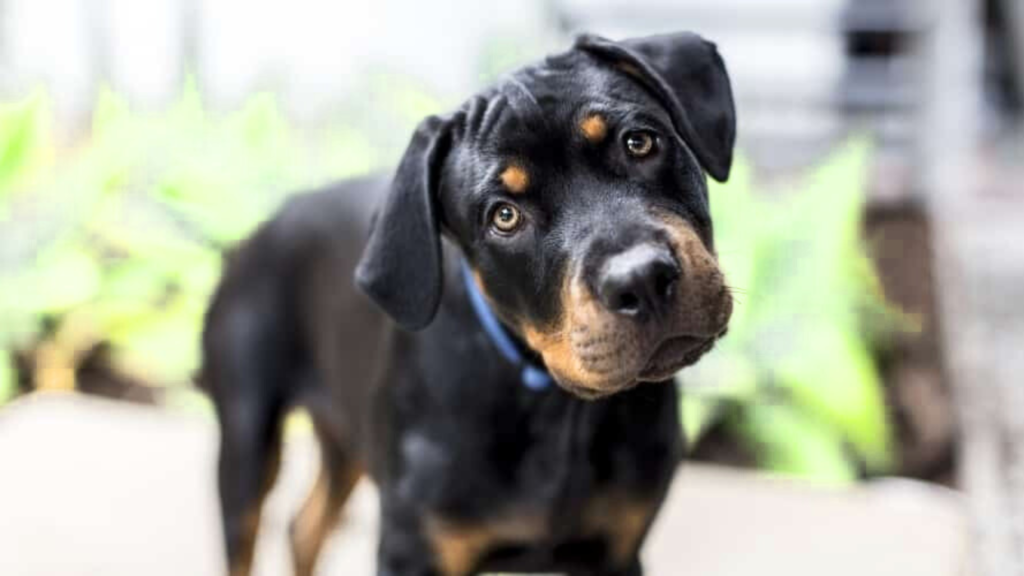
1. Hip and Elbow Dysplasia
Large breeds like Rottweilers are prone to joint issues, which can lead to pain and mobility problems. Ensuring they get the right nutrition and avoiding excessive exercise can reduce the risk of dysplasia.
2. Bloat (Gastric Torsion)
Rottweilers have deep chests, making them susceptible to bloat, a life-threatening condition where the stomach twists. Feeding them multiple small meals, using slow-feed bowls, and avoiding exercise immediately after eating can prevent this condition.
3. Common Infections and Parasites
Regular vet check-ups, vaccinations, and deworming are necessary to prevent infections. Monitoring their coat for fleas, ticks, and skin conditions is also important in maintaining their overall health.
Find out what style dog collar is best for hounds to ensure comfort and safety for your furry friend.
How to Prevent Obesity in a 6-Month-Old Rottweiler?
1. Understanding the Risks of Excess Weight
Obesity is a serious concern for large breeds like Rottweilers. Carrying excess weight puts pressure on their developing joints, increasing the risk of hip dysplasia, arthritis, and heart disease. An overweight puppy is more likely to struggle with mobility issues as they grow, leading to long-term health problems.
A six-month-old Rottweiler should have a visible waistline and ribs that can be felt but not seen prominently. If their body appears rounded or if they lack energy, it may be a sign of overfeeding or inadequate exercise. Regular vet check-ups help ensure your puppy remains at an ideal weight.
2. Proper Portion Control and Feeding Schedule
Many owners overfeed their Rottweilers, believing that bigger meals will make them stronger. However, excessive calorie intake leads to rapid weight gain and health complications. A six-month-old Rottweiler should eat three properly measured meals per day, consisting of high-quality protein and healthy fats.
Using a measuring cup or digital food scale to portion meals can prevent overfeeding. If your puppy is gaining weight too quickly, reducing their calorie intake and incorporating more exercise can help maintain a healthy balance. Avoid free-feeding, as Rottweilers have a strong appetite and may overeat.
3. Healthy Treat Options and Exercise Balance
While treats are an essential part of training, too many high-calorie treats can contribute to obesity. Instead of processed treats, opt for healthy alternatives like carrots, blueberries, or lean meats. Always account for treats in their daily calorie intake to prevent unnecessary weight gain.
In addition to portion control, regular exercise is vital in preventing obesity. Daily walks, interactive play sessions, and mental stimulation will keep your Rottweiler active and fit. Adjusting food portions based on activity levels ensures that your puppy receives the right amount of nutrition without excessive weight gain.
The ideal size collar for English Springer Spaniel typically ranges from 14 to 20 inches, depending on the dog’s age and neck size, ensuring a comfortable and secure fit.
When Will a 6-Month-Old Rottweiler Reach Full Size?
1. Growth Timeline and Final Adult Weight
At six months, a Rottweiler is around 60-65% of its full-grown size, but their growth is far from complete. Male Rottweilers typically reach their full height by 12-18 months, while females may reach their adult size slightly earlier. However, their muscles, chest, and bones continue developing until two to three years of age.
On average, male Rottweilers grow up to 50-60 kg (110-132 lbs), while females reach 35-48 kg (77-105 lbs) in adulthood. Their height usually ranges from 61-69 cm (24-27 inches) for males and 56-63 cm (22-25 inches) for females.
2. Factors That Influence Growth Rate
Several factors impact the rate at which a Rottweiler grows, including genetics, diet, exercise, and overall health. Puppies from larger bloodlines tend to reach higher weight and height ranges, while those from smaller parents may have a more compact build.
Feeding a nutritionally balanced diet ensures proper muscle development, while regular exercise strengthens bones and prevents excessive weight gain. However, excessive high-impact exercise at an early age can negatively affect bone development, leading to long-term joint issues.
3. Signs That Your Rottweiler is Growing Normally
If your six-month-old Rottweiler is steadily gaining weight, developing strong muscles, and remaining active, they are on the right track. Puppies that experience sudden weight loss, stunted growth, or joint stiffness may require veterinary evaluation to rule out nutritional deficiencies or underlying health concerns.
Monitoring your Rottweiler’s weight, body condition, and overall development will help you ensure they grow into a strong, healthy adult. Providing proper nutrition, regular check-ups, and a well-balanced exercise routine will support their growth and longevity.
Final Thoughts: Ensuring a Healthy 6-Month-Old Rottweiler
A 6-month-old Rottweiler is in a vital stage of development where proper diet, exercise, and training play a crucial role in shaping their future health and behavior. Ensuring they remain within a healthy 6 month rottweiler weight range (30-40 kg for males, 26-36 kg for females) and are given the right nutrition, structured exercise, and socialization will help them grow into a well-rounded, obedient adult dog.
The recommended size collar for an English Cocker Spaniel usually ranges from 12 to 18 inches, providing a snug and comfortable fit for your dog.
By providing a balanced diet, consistent training, and proper veterinary care, you can ensure your Rottweiler remains strong, healthy, and well-behaved as they continue growing into adulthood. 🚀

